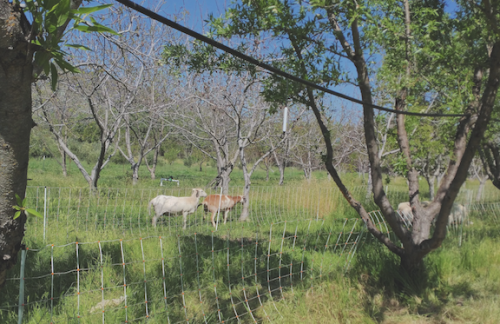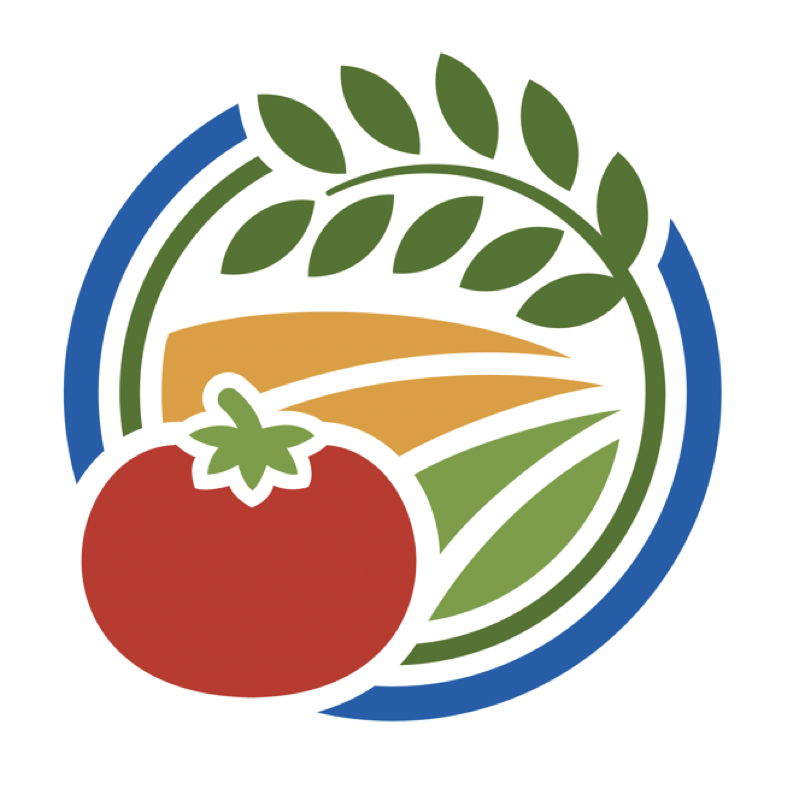
Farm Information
County: Solano
Location: Solano County
Slope: Flat
Irrigation system: Micro-sprinklers
Soil type: Clay loam
Soil detail: Brentwood clay loam
Special farming challenges: Built ponds because water flows through in the winter sometimes causing trees to get buried in the ground.
- Cropping Systems Information
- Crop: walnuts, pecans, chestnuts, stone fruits, pome fruits, olives, winegrapes
Acres of orchard or vineyard: 7.5Other crops: Pastured poultry, sheep, cattle, no-till vegetables
Acres of other crops: 13.5 pasture, 0.5 acre of no till vegetable production
Organic management: Yes
Certifications: None
Certifications notes: Farm with organic practices
Where using cover crops: Everywhere as resident vegetation. - Grower Experience, Farm Priorities, and Cover Cropping Goals
- When started farming (yr): 2008
Farm priorities: Minimal disturbance. Keep the soil covered with perennial plants as much as possible. Create a diverse ecosystem in an oak savannah model. Animal integration. Natural farming without animals is like nature without animals - not very natural. Maximize the calories we can get off this property with minimal soil disturbance.
Years growing orchard or vineyard crop: 13 years
Years growing cover crops: n/a
Initial transition to cover cropping: n/a
Goals and benefits: Soil improvement, pollinator support, insect predator support
Benefits description: Ecosystem diversity makes for a more interesting farm and attracts people to farm tours and farm store. Contributes to economic growth of the farm.
Change in goals over time: n/a
Reasons: Felt that there was no big gain in cover cropping and termination, so preferred to use resident vegetation. - Cover Crop Details, Planting and Management Methods
-
Block described here: walnuts, pecans, chestnuts, stone fruits, pears, olives, winegrapes
Current cover crops: Resident vegetation
Species and mixes: Resident vegetation: Wild clover, grasses, oats
Planting method: n/a
Planting date (2020): n/a
Was that optimal? n/a resident vegetation
Pre-plant soil prep: n/a
Planting equipment: n/a
Seeding rate: n/a
Seeding depth: n/a
Did it germinate well? n/a
Additional management and advice: Move sheep to new place in orchard about every other day. You don't want them to get too low on forage (they will start getting out). Resident orchard grasses are so thick and he does essentially nothing to manage them, except to move sheep through and occasionally mow when they get too tall. Harvest almonds onto tarp, so don't touch the ground. - Cover Crop Termination Methods and Biomass Management
-
Termination method: Mow, graze
Termination equipment and process: n/a
Termination date: No termination, permanent cover.
Was it optimal? n/a
Biomass management: n/a - Cover Cropping Challenges and Strategies to Address Them
- Challenges: Other
Challenges description: Polytubing and sprinkler heads buried in the tall grasses often get nicked by mower. Sheep grazing in young orchards is challenging to manage - need to protect the young trees. Easier to manage in mature orchards.
Strategies to address challenges: Elevated sprinkler heads. Use chicken wire or electric fencing to protect young trees from sheep.
Was the cover crop worth it? n/a
Least successful past cover crops: n/a
